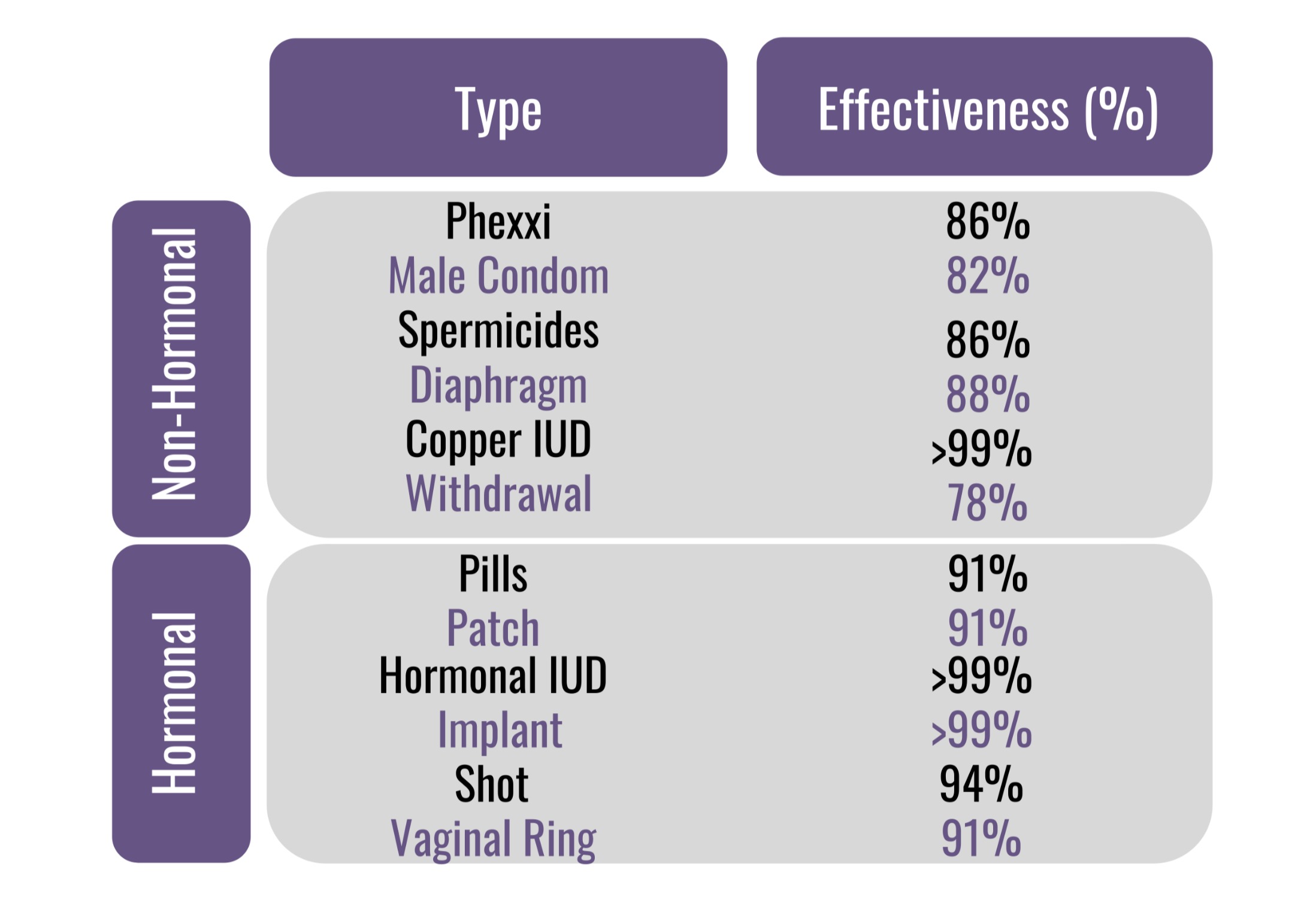Phexxi™: A New Non-Hormonal Contraceptive Option
Phexxi is a new method of contraception that was FDA-approved in May 2020 and is anticipated to arrive on the market in September 2020. Phexxi does not contain any hormones that are in traditional methods of contraception. Instead, Phexxi contains lactic acid, citric acid, and potassium bitartrate, which are commonly used as food additives. Phexxi is indicated for the prevention of pregnancy and is considered an on-demand option. Phexxi is a vaginal gel that comes in single-use vaginal applicators to be administered prior to each occurrence of vaginal intercourse[1].
How does Phexxi work? Will it interact with any other medications?
Mechanistically, Phexxi works by having a pH lowering effect in the vagina and additionally works by reducing sperm motility[1]. It is important to note that Phexxi can be used in combination with several other contraceptives such as hormonal contraceptives, latex, polyurethane and polyisoprene condoms, and vaginal diaphragms[1]. Additionally, Phexxi can be used with products for vaginal fungal infections such as miconazole, metronidazole, and tioconazole. However, Phexxi can NOT be used concurrently with vaginal contraceptive rings[1].
How should I take Phexxi?
You can insert Phexxi immediately before or up to one hour prior to vaginal intercourse. If more than one vaginal intercourse occurs within a one-hour time period, an additional dose of Phexxi needs to be used. Phexxi will not work to prevent pregnancy if it is administered after intercourse. Phexxi can be used at any time during your menstrual cycles. Another advantage of Phexxi is that it can be used following childbirth, abortion, or miscarriage, (as soon as safe vaginal intercourse can be resumed). Currently, there is no data on the presence of lactic acid, citric acid, or potassium bitartrate or their metabolites in human milk. Furthermore, the effects of infants if breastfed or effects on milk production, if a mother is using Phexxi, was not reported in the trial[1].
What are the side effects of Phexxi?
Side effects experienced by a small number of women (0.36%) in the study were cystitis (urinary tract infections) and pyelonephritis (urinary tract infections involving your kidneys)[1]. If you have a history of recurrent urinary tract infections or urinary tract abnormalities, then you should avoid using Phexxi. More common side effects that were reported included vulvovaginal itching (14.5% of women) and vulvovaginal fungal infection (9.1% of women). Interestingly, the trial also included male side effects which was local discomfort described as burning, itching, pain, or other (9.8% of men)[1].
How well does Phexxi work?
According to the data from the clinical trials, Phexxi had an 86% rate of effectiveness[1]. What does this mean? Below is a table comparing other common contraceptive methods and their effectiveness. It doesn’t prevent pregnancy as well as other methods, but it offers an alternative to barrier methods, like condoms.

How Do I Get Phexxi?
Once available, Phexxi will require a prescription from a health care provider.
Final Thoughts
Since there are no hormones in Phexxi, it may be a good alternative if you cannot tolerate hormonal contraceptives or want to try a new means of contraception. If you’re still not sure if Phexxi is right for you, talk to your local pharmacist. Pharmacists can play a key role in educating you on this drug and helping you make this decision. As with all new products, we will learn more about its long-term safety and effect on preventing pregnancy once it becomes available at the pharmacy.
References:
- Evofem. Phexxi (lactic acid, citric acid, potassium bitartrate) [package insert]. U.S. Food and Drug Administration website. https://www.accessdata.fda.gov/drugsatfda_docs/label/2020/208352s000lbl.pdf. Revised May 2020. Accessed June 19. 2020.
About the Author:

Breanna Failla is a pharmacy student at Midwestern University Chicago College of Pharmacy, she is one of the student interns at Birth Control Pharmacist.
Article reviewed by Brooke Griffin, PharmD, BCACP
